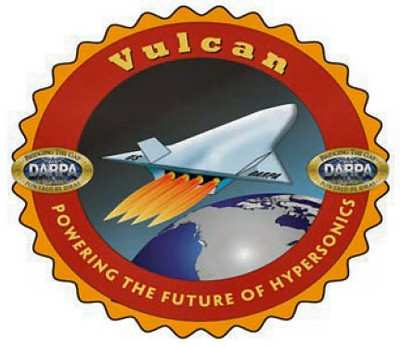DARPA has kicked off the Vulcan program with awards to four
contractors. The four contractors participating in the eight-month
first phase are: Alliant TechSystems, General Electric, Rolls Royce
and United Technologies.

During the program’s first phase, contractors will develop
systems requirements for an operational Vulcan engine system,
develop systems requirements and a conceptual design for a constant
volume combustion (CVC) demonstration system, and develop a
critical technology development plan to reduce risk on all key
aspects of the Vulcan engine.
The Vulcan program is a propulsion system demonstration effort
to design, build and ground-test an engine capable of accelerating
a full-scale hypersonic vehicle from rest to Mach 4+. The Vulcan
engine is critical to enabling full-scale hypersonic cruise
vehicles for intelligence, surveillance, reconnaissance, strike or
other critical national missions. It can serve as the low-speed
accelerator for hypersonic vehicles that use turbine-based
combined-cycle engines or as a stand-alone engine for Mach 0-4+
strike and reconnaissance aircraft.
The Vulcan engine will consist of an integrated CVC engine and a
full-scale turbine engine. Contractors will choose from CVC engine
architectures such as pulsed detonation engines, continuous
detonation engines or other unsteady CVC engine architectures. The
CVC engine will operate from below the upper Mach limit of the
turbine engine to speeds of Mach 4+. Contractors will use a turbine
engine that is a current production engine capable of operating at
or above Mach 2, such as a F100-229, F110-129, F119 or F414
engine.

A CVC engine relies on a combustion cycle based on combusting
fuel in a constant volume manner as opposed to traditional
propulsion engines that burn the fuel in a constant pressure
manner. CVC engine cycles offer potentially very significant
performance improvements over conventional cycles, have the ability
to operate statically through high Mach numbers and offer
significant design flexibility. Constant volume combustion cycles
are typically unsteady and incorporate multiple combustors and
unique valving to regulate the unsteady combustion process.
Several key technical challenges must be overcome to realize the
potential of CVC propulsion. These challenges include efficient
detonation initiation, low total pressure loss detonation
initiation devices, low total pressure loss air valves, thermal
management systems, efficient nozzles, and control systems, to name
a few. Recent advances in liquid hydrocarbon/air detonation
ignition, low total pressure loss detonation transition devices,
air valve and nozzle demonstrations, computer modeling, measurement
techniques and other factors provide a strong foundation for a
successful Vulcan program.
A key objective of the DARPA program is to integrate the turbine
engine into the Vulcan engine system with minimal modification to
the turbine engine, operate the turbine engine from rest to its
upper Mach limit and cocoon the turbine engine when it is not in
use during flight. The turbine and CVC engines will share a common
inlet and nozzle.

DARPA will use the results of the first phase of the Vulcan
program to make decisions regarding future phases, which notionally
could include a 18-month second phase for risk reduction testing of
full-scale components and conclude with a preliminary design review
of the CVC demonstration engine. This could be followed by 18
additional months for detailed design, fabrication and
demonstration of the CVC engine system, with a final 18-month phase
to design, build and demonstrate the full Vulcan system (the CVC
engine integrated with the turbine engine).
 ANN's Daily Aero-Linx (04.13.24)
ANN's Daily Aero-Linx (04.13.24) ANN's Daily Aero-Term (04.13.24): Beyond Visual Line Of Sight (BVLOS)
ANN's Daily Aero-Term (04.13.24): Beyond Visual Line Of Sight (BVLOS) Airborne 04.09.24: SnF24!, Piper-DeltaHawk!, Fisher Update, Junkers
Airborne 04.09.24: SnF24!, Piper-DeltaHawk!, Fisher Update, Junkers Aero-News: Quote of the Day (04.14.24)
Aero-News: Quote of the Day (04.14.24) ANN's Daily Aero-Term (04.14.24): Maximum Authorized Altitude
ANN's Daily Aero-Term (04.14.24): Maximum Authorized Altitude





